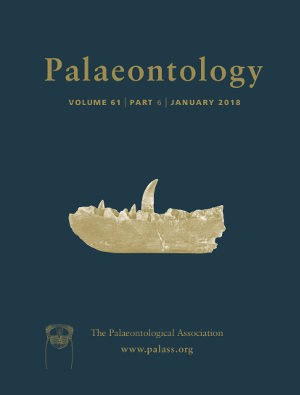Reg. Charity No. 1168330

The development of X‐ray tomography in the last decade has led to a revolution in palaeontology by providing a means of imaging 3D fossils. In turn, imaging of flat fossils has strongly benefitted from critical improvement of synchrotron X‐ray fluorescence (XRF). The latter, which allows the mapping of 2D distributions of major‐to‐trace elements over decimetre‐scale objects, usually targets metals with atomic number (Z) up to strontium (K‐shell emission lines); in the same energy domain, L‐shell emission lines of heavier elements (particularly lead) can also be analysed. A fluorescence signal from strontium can escape from a depth of a few 100 μm in fossils, thereby revealing, due to its substitution for calcium in calcium phosphates (apatite group minerals and bone), hidden fossil bone or phosphatized remains. Nonetheless, strontium similarly substitutes for calcium in calcium carbonates, resulting in the absence of contrast when fossils are preserved in limestone. Here, we show that this issue can easily be overcome by using X‐rays slightly higher in energy (17.2 keV and above) to excite and detect yttrium fluorescence. Together with lanthanides (collectively known as the rare earth elements), yttrium preferentially substitutes for calcium in calcium phosphates, offering anatomical contrasts for a wider range of fossils. This is demonstrated here for three fossils (vertebrate and invertebrate) from different ages and depositional environments. We then discuss the different chemical behaviours of strontium and yttrium in calcium phosphates and carbonates. Although yttrium is also found in other (rarer) minerals, its mapping using synchrotron XRF could be used as a proxy to pinpoint calcium phosphates in fossils and other geological materials.